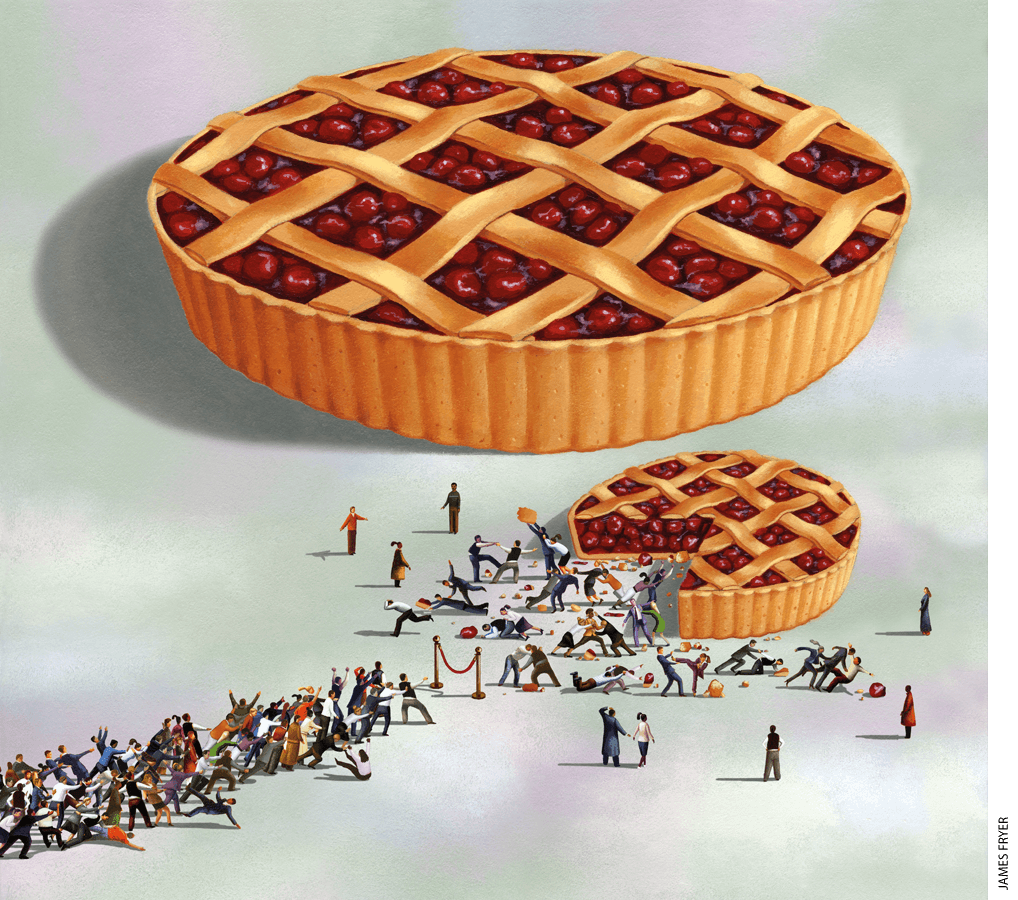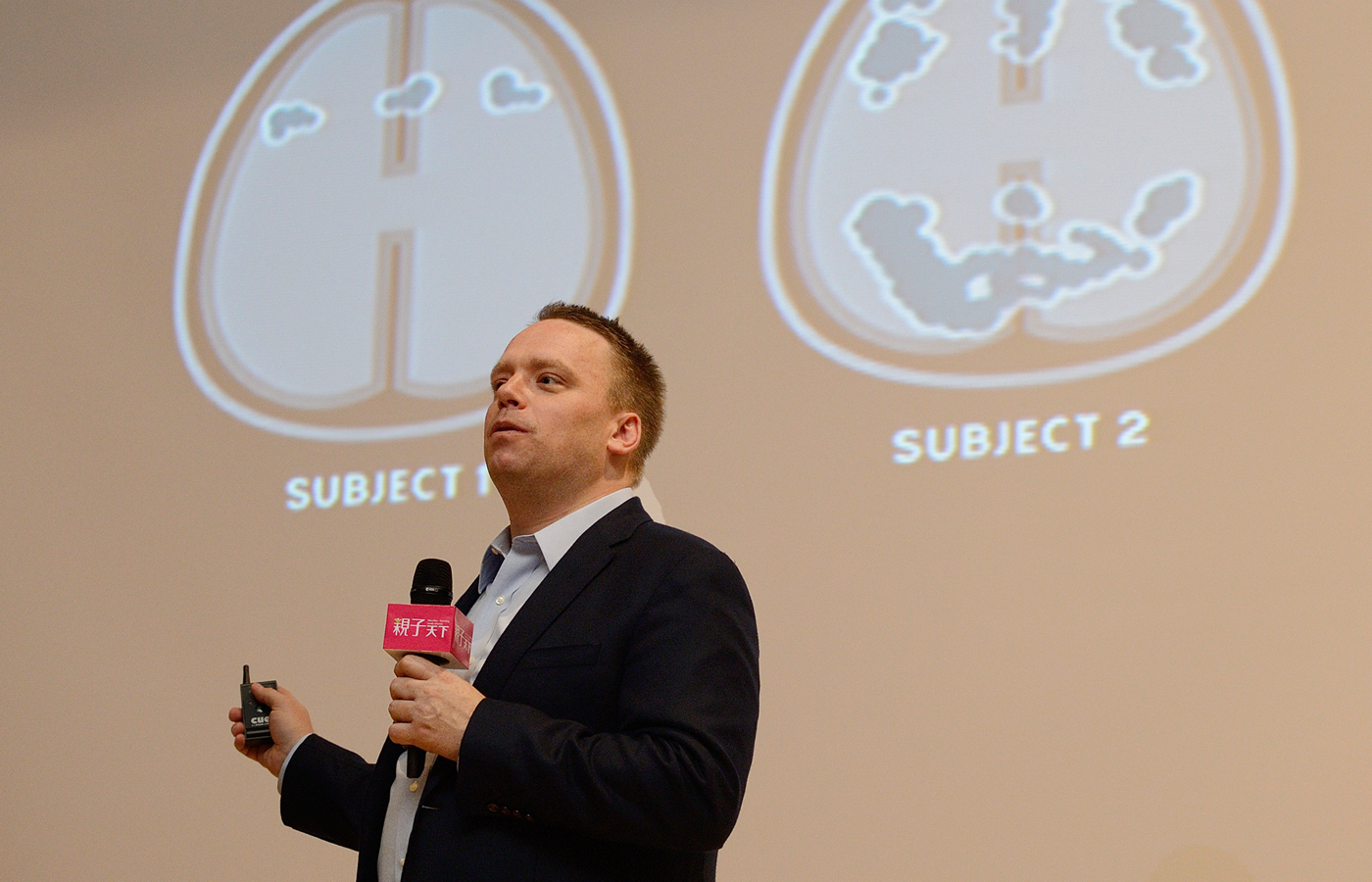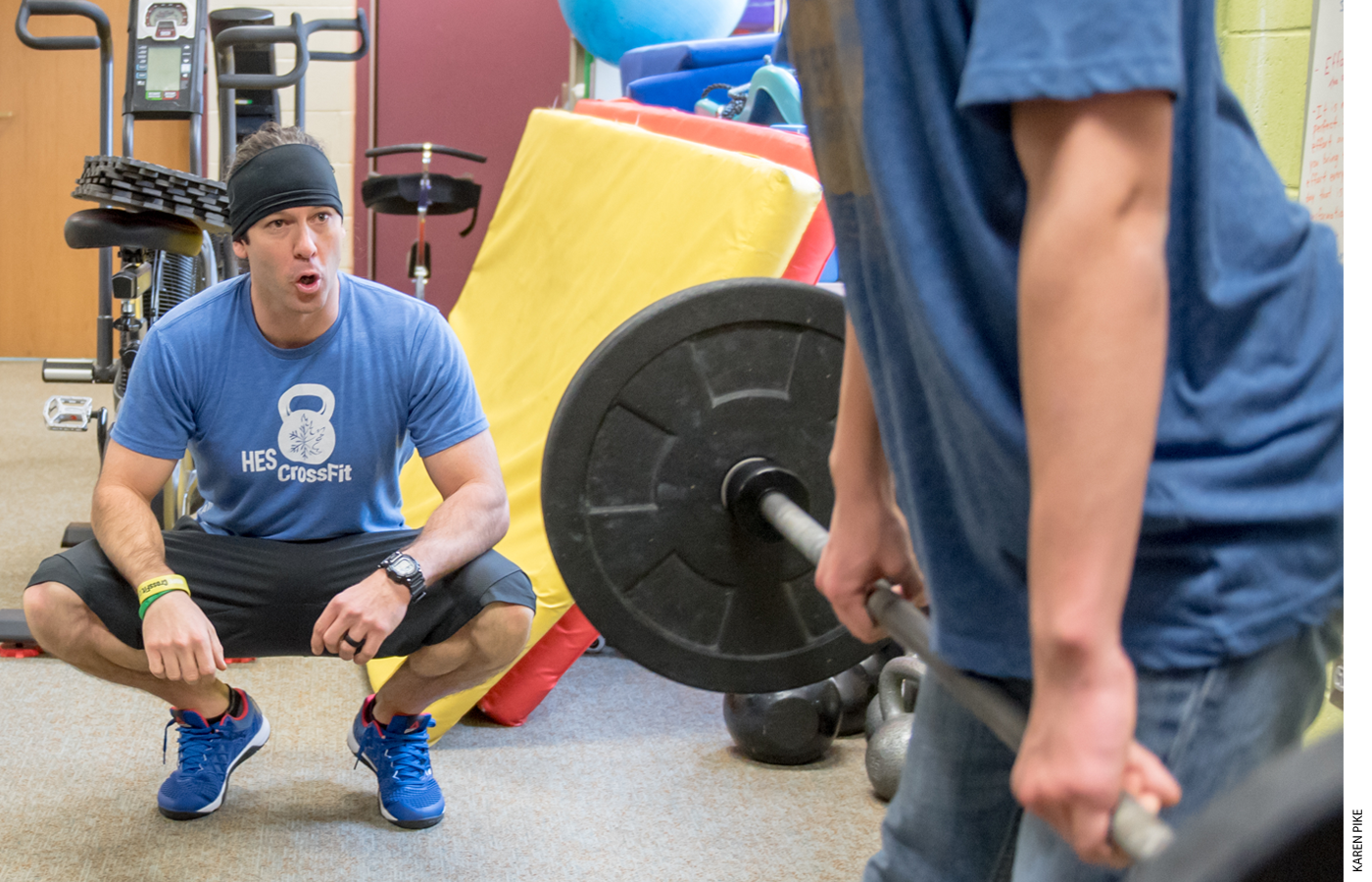
Educators preach about growth and grit to children, but the system itself fails to encourage perseverance and curiosity. Instead, it does the opposite by affixing labels to students, sorting them into relatively static groups, and signaling to the students that that their effort doesn’t matter. This learning model is an outgrowth of a dangerous zero-sum mindset. That mindset creates winners and losers among students before they turn 18, and it causes society to miss out on unique talent that could have been developed. A better alternative is reinventing school culture as a whole and reorienting it toward a mastery-based, positive-sum system that will allow students to embrace their strengths and flourish.
Under today’s system, time is held as a constant and each student’s learning is variable. Students move from concept to concept after spending a fixed number of days, weeks, or months on the subject. Educators teach, sometimes administer a test, and move students on to the next unit or body of material regardless of the class’s results, effort, and understanding of the topic. Students typically receive feedback and results much later and only after they have progressed.
The system signals to students that it doesn’t matter if they stick with something, because they’ll move on either way. This approach undermines the value of perseverance and curiosity, as it does not reward students for spending more time on a topic. It also demotivates students, as many become bored when they don’t have to work at topics that come easily to them or when they fall behind because they don’t understand a building-block concept. Yet the class continues to progress, and students develop holes in their learning. This fixed-time, variable-learning system fails students.
Contrast this with a mastery-based—or competency-based—learning model in which time becomes the variable and learning becomes guaranteed. Students only move on from a concept once they demonstrate mastery of the knowledge and skills at hand. If they initially fail, that’s fine. Failure is an integral part of the learning process. Students stick with a task, learn from the failures, and work until they demonstrate mastery. For core knowledge and concepts, success is both required and guaranteed.
Mastery-based learning systematically embeds perseverance into its design. It showcases having a growth mindset, because students can improve their performance and master academic knowledge, skills, and habits of success.
Even if teachers today talk about the importance of perseverance and growth mindset, today’s system doesn’t reward those habits. It undermines them.
Similarly, by not providing timely, actionable feedback, schools demotivate learners. Research shows that when students receive feedback but cannot improve their performance with that feedback, it has a negative influence on student learning. Conversely, when students can use the feedback, it has a positive impact on learning. It also opens the door to more positive and personalized interactions with teachers. Those interactions build trust.
Our school structures are built on a historical legacy of sorting students out of the education system at various intervals. This stems from a scarcity mentality—that there are only a few opportunities, so we must select those students who will benefit the most and discard the rest. These structures make judgments about students’ capacities before the students have had a fair chance to prove themselves.

The Perils of the Zero-Sum Mindset
This zero-sum mindset—that for every winner there must be a loser—means that, by age 18, before people have lived most of their lives, we have labeled the vast majority of students. Instead of helping them understand their strengths and make decisions about potential career paths, we have signaled to many that they aren’t good enough for certain pathways or that they are “below” others.
Although this might be easier administratively than the alternative, it is devastating. This overlooks talent that could be developed. And it ignores that so much of our society—like capitalism, when it works properly—is built on a positive-sum mindset. Schooling and its scarcity mindset are anomalies today.
As Todd Rose, author of The End of Average, told Diane Tavenner and me on our Class Disrupted podcast, the opposite of a zero-sum game is a positive-sum one in which the pie grows larger as individuals achieve success. One of Adam Smith’s central insights in the 1700s, Rose said, is that “the mercantilist idea of zero-sum economies was just fatally wrong” and that society should instead create the correct conditions for self-interest to engender positive-sum outcomes. A big benefit from moving to a positive-sum system is that instead of competing to be the best—as you would in a zero-sum game—you compete to be unique.
“The last thing you want to do is be competing with some other people on the exact same thing. It limits you. It limits your value,” Rose said. He said his research shows that trying to be unique “translates into much higher life satisfaction.”
That’s the opposite of those who compete to be the best, “in which even higher levels of achievement do not correlate with higher life satisfaction or happiness. So there’s something about understanding how to compete, to be unique and achieving on that uniqueness. That matters both for personal fulfillment and the life I want to live, but also ultimately my greatest contribution to society.”
Competition can be good. Social comparisons can help an individual realize certain things are possible that they would not have imagined otherwise. But when we shrink the definition of life success and only value people on a few uniform and narrow dimensions, competition is problematic. Competition is also a problem when we declare, prematurely, that the game is over.
People don’t learn in a linear way, all on the same path and at the same pace. People develop at different rates. They have different strengths and weaknesses, with different contexts, background knowledge, working memory and cognitive capacities, and social and emotional learning states. It’s vital that we do not sort students off of a pathway too soon . Instead, we’d be better off creating and illuminating a variety of viable pathways. Customizing is critical to helping every child fulfill their human potential.

A Better Way Forward
Moving to a mastery-based system offers a path to escaping the traditional zero-sum system.
In a traditional education system, teachers often subconsciously compare their students. They do this explicitly when they use a curve to grade the class. Under such a system, there is a cost for a given student to help and support their peers. At worst, providing such help undermines the helping student’s own chance for success and opportunity. When schools are sorting students, comparing them to one another, and doling out scarce opportunity in the form of selective-college admissions, there are few incentives to cooperate rather than compete. All of this works against helping students have fun with each other as they learn.
Competition for extrinsic reasons—out of a desire to be the best for its own sake, not for the intrinsic value of the experience—has clear downsides. Experts ranging from the New York Times’s Frank Bruni to Harvard’s Michael Sandel have offered observations on the current system and raised questions about how healthy this is for the individuals themselves, as well as for society writ large.
“Our credentialing function is beginning to crowd out our educational function,” Sandel said in an interview with the Chronicle for Higher Education. “Students win admission to [exclusive institutions] by converting their teenage years—or their parents converting their teenage years—into a stress-strewn gauntlet of meritocratic striving. That inculcates intense pressure for achievement. So even the winners in the meritocratic competition are wounded by it, because they become so accustomed to accumulating achievements and credentials, so accustomed to jumping through hoops and pleasing their parents and teachers and coaches and admissions committees, that the habit of hoop-jumping becomes difficult to break. By the time they arrive in college, many find it difficult to step back and reflect on what’s worth caring about, on what they truly would love to study and learn.”
Rose said this competition to be the best for its own sake is counterproductive and nonsensical.
“Literally you gotta be the same as everyone else only better,” he said. “Take the same test,” but get a higher score. “Take the same classes. Get better grades.”
The problem, according to Rose, is that our current system of education—and selective higher education in particular—is zero sum.
The good news is that moving to a mastery-based system and measuring students against a standard instead of each other can lift students and teachers into a positive-sum system. The success of some students would no longer be at the expense of others. Incorporating projects and small-group learning where students are actively giving each other feedback and supporting each other also helps lift students and educators into a positive-sum system.
As students seek to carve out their own pathways in life and be the unique individuals they are, comparisons can shift from trying to label someone’s ability on a narrow set of measures to instead understanding who they are becoming. Where comparison is still important, we can look at students’ depth of learning to understand where their passions are, their progress against their goals, or even their rate of learning to see which areas are truly their strengths and aptitudes. This offers a better way for educators to help all students build their passions, fulfill their potential, and understand how they can best contribute to society.
Transforming Physical Education
An example from outside traditional academics—in the realm of fitness in schools—helps illustrate some of the principles.
Although fitness can bolster students’ academic success, the place where fitness should occur in most schools—physical-education class—is all too often focused on teaching organized sports and games rather than ensuring that each student is moving daily and improving their fitness. Far too often, PE class makes some individuals feel like failures.
Peter Driscoll, a PE teacher at Hartford High School in the Hartford School District of Vermont, has spent much of his teaching career changing that dynamic. An avid CrossFitter, Driscoll brings an ethos of CrossFit into his classes, with a focus on building a foundation of fitness in each individual. Other teachers in the building have told Driscoll that they notice the students are in a much better space for learning after his class.
But Driscoll hasn’t just helped students be successful in other areas. He’s changed the methodology of his class so that all students can experience success in PE itself.
The first change he implemented was when he was teaching elementary school. At the start of each class, he had the children do a “Tabata Workout,” in which an individual works out for 20 seconds, rests for 10 seconds, and then works out again for a total of four minutes. In many cases, that working out was just running back and forth across the gym. Because it was time based, no child finished before any other child. The students loved it.
This practice changed what Driscoll had observed previously. “The kids who really loved PE were the kids who were innately good at fleeing, chasing, and dodging, and they had the coordination and agility skills, and they were just supersized,” he told me. “And the other kids didn’t. They didn’t have that self-confidence from our class that I wanted them to. So when I switched to kind of a fitness-based approach and got away from team games and the competitive side of team sports, the program has blossomed, and the kids would go home and rave about what they did in class. And I got a ton of support from the parents.”
Driscoll has since expanded his work.
His high school students now set personal fitness goals with clear numbers attached to them. This is to ensure a student is competing only against that particular student’s own prior performance and future goals, not anyone else in the class or school.
Students plan how they will tackle the workout of the day. What’s their strategy, and how will they pace themselves? Where do they need to scale a given movement, for example, so that they can safely and successfully complete the workout?
Finally, after the workout, the students receive immediate feedback on how they did. They use the information to reflect with Driscoll on what they can do better to realize their personal goals.
The result is one where each student is essentially enjoying a personalized PE class. This allows students to experience the feelings of daily success along with the endorphins and dopamine produced by both sweat and authentic accomplishments.
Reinventing Culture
As schools seek to reinvent themselves, caring about culture is critical. But in the current zero-sum education system, it’s impossible to create a culture where every single child is valued.
The current time-based system focuses on sorting students. That compels teachers to judge students relative to others, rather than focusing solely on how to support each child so that all can be successful. Until schools move to a positive-sum system centered around a mastery guarantee rather than time, it won’t be possible to create a true culture that prioritizes every child. That is a sobering thought. Some educators in schools that sweat the small stuff for every child will undoubtedly protest its validity, but, writ large across the system, it’s true.
The road to positive-sum schooling system starts with small steps, not big leaps. Rather than impose a big vision of systems change that doesn’t help individuals with their specific challenges, we should encourage each child, teacher, and parent to make progress as they define it for themselves. This will ameliorate their struggles, improve morale, ensure mastery for each child, and move us to a positive-sum school system over time. In such a system, the measure would not be time, but progress, as individual children chase their most daring dreams.
Adapted from From Reopen to Reinvent: (Re)creating School for Every Child, coming from Jossey-Bass in July 2022. Michael B. Horn is executive editor of Education Next, co-founder of and distinguished fellow at the Clayton Christensen Institute for Disruptive Innovation, and senior strategist at Guild Education.
This article appeared in the Fall 2022 issue of Education Next. Suggested citation format:
Horn, M.R. (2022). From Zero Sum to Positive Sum: In the current system, some students succeed at the expense of others. It doesn’t have to be that way. Education Next, 22(4), 44-49.


